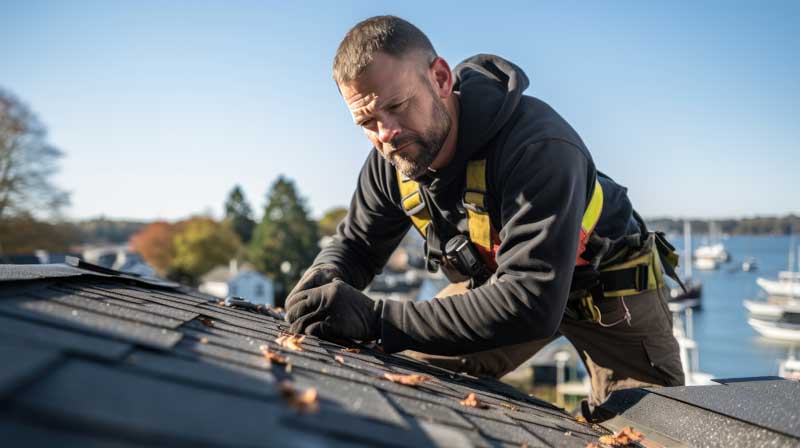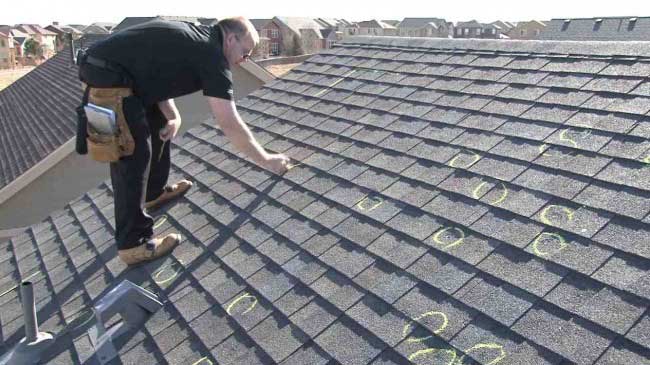If you’ve never dealt with home insurance before, the process can seem overwhelming. This step-by-step guide will help Georgia homeowners understand how insurance works, the difference between policy types, and how to navigate the claims process.
Step 1: Understanding What Home Insurance Actually Is
Home insurance is a safety net for homeowners. You pay a regular fee (called a premium) to an insurance company, and they promise to help pay for repairs if your home gets damaged by certain events like storms, fire, or theft if it falls within their coverage.
In Georgia, where we see severe weather from thunderstorms to hurricanes, having proper insurance isn’t just recommended—it’s essential.
Step 2: Know Your Coverage Options: ACV vs RCV Policies
When shopping for insurance in Georgia, you’ll encounter two main types of coverage:
Actual Cash Value (ACV) Policies
- What it means: These policies pay what your damaged property is worth today, after accounting for age and wear-and-tear (depreciation).
- Real-world example: If your 10-year-old roof gets damaged in a storm, the insurance company looks at how much life it had left. If a new roof costs $15,000 but yours was halfway through its useful life, you might only receive $7,500.
Replacement Cost Value (RCV) Policies
- What it means: These policies pay what it costs to replace your damaged property with new items of similar quality and type.
- How it’s calculated: The RCV is made up of these two things: The Actual Cost Value (ACV) and depreciation. The ACV is the first payment you’ll receive once approved and the depreciation is paid out once the work is performed.
- Real-world example: Using the same scenario, with an RCV policy, you would receive the full $15,000 needed for a new roof (minus your deductible), regardless of how old your current roof was.
Step 3: Choose the Right Policy for Your Situation
When deciding between ACV and RCV:
- If budget is your main concern: ACV policies have lower premiums but higher out-of-pocket costs when claims happen.
- If you want more protection: RCV policies cost more each month but provide better coverage when you need it.
- If your home is newer: The difference between ACV and RCV payouts will be smaller.
- If your home is older: RCV becomes much more valuable as your home and its components age.
Pros of ACV:
- Lower premium costs
- Still provides basic coverage
Cons of ACV:
- You’ll receive less money for claims
- You’ll pay more out-of-pocket to replace damaged items
- The older your home and belongings, the less you’ll receive
Pros of RCV:
- Higher claim payments
- Less out-of-pocket expense to replace damaged items
- Better protection for older homes
Cons of RCV:
- Higher premium costs
- May have specific requirements to qualify

Step 4: Learn How Georgia Insurance Claims Work
If your home gets damaged, here’s what happens:
- Document the damage: Take photos and notes about what happened and when.
- Schedule a roof inspection: To the untrained eye, it is hard to tell if you have been affected. Get in contact with a roofing contractor to perform a roof inspection. They’ll be able to recognize if you’ve affected, and advise you on the next steps.
- Contact your insurance company: Call the number on your policy or use their app/website to report the damage. Most roofing contractors will help with this. This starts the “claims process.”
- Meet with an adjuster: The insurance company sends a person called an “adjuster” to inspect your home. Their job is to:
- Confirm the damage happened the way you said
- Determine if your policy covers this type of damage
- Calculate how much the insurance company should pay
- Review the estimate: The adjuster provides en estimate showing what damage they found and how much the insurance company will pay. This is based on whether you have an ACV or RCV policy.
- Receive payment: If your claim is approved, you’ll receive payment based on your policy type:
- With ACV: You get one check for the depreciated value once the claim is approved. You will be responsible for paying for the depreciation amount, and the deductible.
- With RCV: You typically get two payments—first the ACV amount, then the remaining balance (depreciation).
- Complete repairs: You’ll work with your chosen contractor to fix the damage.
- Invoicing: The contractor will invoice your insurance for the work performed and any additional work performed in the form of supplements. Once approved, your insurance will release the rest of the funds to you in the form of a check or ACH payment.
- Close out: Once you’ve received all of the funds, you’ll pay the contractor the rest of the insurance proceeds to bring this project to a close. You’ll receive an invoice along with any supporting documents that will prove the work was performed.

Step 5: Understand Your Out-of-Pocket Costs
Before insurance pays anything, you’ll need to pay your deductible. This is an amount you chose when you bought your policy—commonly $500, $1,000, or $2,500.
Example:
- Storm damage repair costs: $10,000
- Your deductible: $1,000
- With RCV policy: Insurance pays $9,000
- With ACV policy for older materials: Insurance might pay $5,000, leaving you to pay $5,000 ($1,000 deductible + $4,000 depreciation)
Summary: Making Sense of It All
Home insurance in Georgia boils down to this:
- ACV policies cost less upfront but provide less money when you have a claim because they only pay what your damaged property is worth today.
- RCV policies cost more in premiums but provide better protection by paying what it costs to replace your damaged property with new items.
- The claims process follows specific steps, from reporting damage to receiving payment and making repairs.
- Your choice should reflect your budget, your home’s age and condition, and how much financial risk you’re comfortable taking.
Next Steps
Many Georgia homeowners don’t realize their roof may qualify for insurance coverage after storm damage. Even if you don’t see obvious leaks, hidden damage could affect your home’s structural integrity.
Schedule a free, no-obligation roof inspection today to determine if your roof has damage that might be covered by insurance. Our experts can help explain your policy coverage and guide you through the claims process if damage is found.
